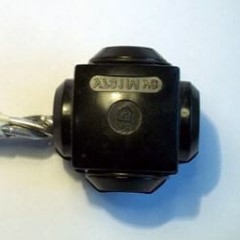Welding of copper and aluminum wires
It's important to know
The simplest and fastest way to resolve the issue of how to connect the wires is considered to be twistingbut at the same time twisted cores represent a very low degree of contact reliability. Due to the low reliability, it is not acceptable and according to chapter 2.1. PUE Section 2.1.21 shows the following acceptable connection methods: screw or bolt clamps (terminal blocks of various types), reconciliation and soldering.
Terminal blocks and crimping devices increase the reliability of installation, however, they are several orders of magnitude inferior to such a connection method as welding. In preparation for the electrical installation, weighing all the pros and cons, it is definitely worth casting aside doubts and giving preference to this method.
People who are not knowledgeable in matters of electrical installation have the opinion that this method of connection is an unacceptably advanced technological process that requires the highest qualification of the contractor and the use of highly complex equipment. In fact, everything is very simple and affordable. To do the welding of wires with your own hands is quite within the power of a person who has the simplest skills of handling an electric welding machine at home.
The issue is very relevant for our time, since the time when inverter welding machines became available for mass purchase. The inverter welder is very convenient and practical, it consumes a little electricity and can work from the network, in addition, the cost of low-power models lies in the range of 50-100 dollars. As an apparatus, you can use a home-made device based on a step-down transformer. For a person with knowledge and skills in the field of electrical engineering, the question is, how to make a welding machine do it yourselfis not a big deal. Electric installation companies specializing in welding use special welding machines in their work.
What you need to prepare
In addition to the apparatus for welding, you should prepare and have all the necessary equipment, materials and tools. Wires are welded using carbon (graphite) electrodes. As such electrodes, you can use both industrial design (such as the EG brand) and a brush from an electric motor, a piece of shoe from a trolley bus, graphite cores from batteries of type 3336 (3R12) or modern salt ones.For the manufacture of conductive products, copper and much less often aluminum is used. For information, according to the latest requirements of the PUE, the use of aluminum conductors with a cross section of less than 16 mm2 prohibited.
Depending on what you have to weld - aluminum or copper, the composition of the flux intended for the chemical dissolution of the oxide film formed during welding is selected. When welding aluminum wires, you need to use flux, copper can be cooked without it, first you need to strip the conductors in both cases
In the process of preparing the ends of the conductors and in the course of work, you will need a knife and pliers, electrical insulation materials.
By the way, an alternative is soldering wires. Read how to solder the wires correctly in our article!
Process features
Before you start welding electric wires, you must configure the machine. Considering that the conductors to be welded can be of different cross-sections, the current at the output of the welding machine must be selected empirically so as not to cause overheating of the conductors being connected or sticking of the electrode at the connection point. The ends of the conductors must be cleaned from insulation (bare wires must have a length of 5 cm or more) and connect them together, as is done with twisting.
Having pre-treated the twisted bare ends with flux (in the case of aluminum welding), clamp them with pliers and attach the mass to them, the electrode is brought to the end of the twist, which should be directed down, and held in this position for 0.5 to 2 seconds. After making sure that a copper or aluminum ball has formed at the contact point, stop welding. After the connection cools down, clean with flux sandpaper. Before applying an insulating coating to the welded wires, it is recommended to treat this area with a solvent, followed by coating with an electrical insulating varnish. However, note that the ball at the end of the twist should be smooth with a minimum number of pores. Otherwise, the weld point will burst.
It is strictly forbidden to connect live conductors. Before starting work, using a probe, you must make sure that it is absent. To protect eyes, face and hands from burns during work, it is imperative to use a protective mask and gloves.
The technology of welding copper wires with an inverter is provided in the video:
For aluminum wires, there is an alternative welding option - with a gas torch. In this case, it is necessary to prepare current-carrying conductors as well as for electric welding, with the exception of flux treatment. For work, you need a steel bar with a cross section of the order of 2 mm. The junction must be heated with a gas burner until there are signs of melting at the weld point on the twist end.
During melting, liquid aluminum is enveloped in a kind of cocoon consisting of an oxide film that impedes the bonding process. After making sure that the aluminum has melted, to complete it, it is necessary to destroy the formed oxide film layer simultaneously with heating using a steel rod, which will ensure a reliable welding process.
The video below demonstrates the connection of aluminum wires by welding using a gas torch:
So we examined how to connect the conductors using a welding machine or a gas torch. As you can see, do-it-yourself welding of wires in the junction box is not as time-consuming as it seems. We hope the information provided was useful and interesting for you!
Surely you do not know:








